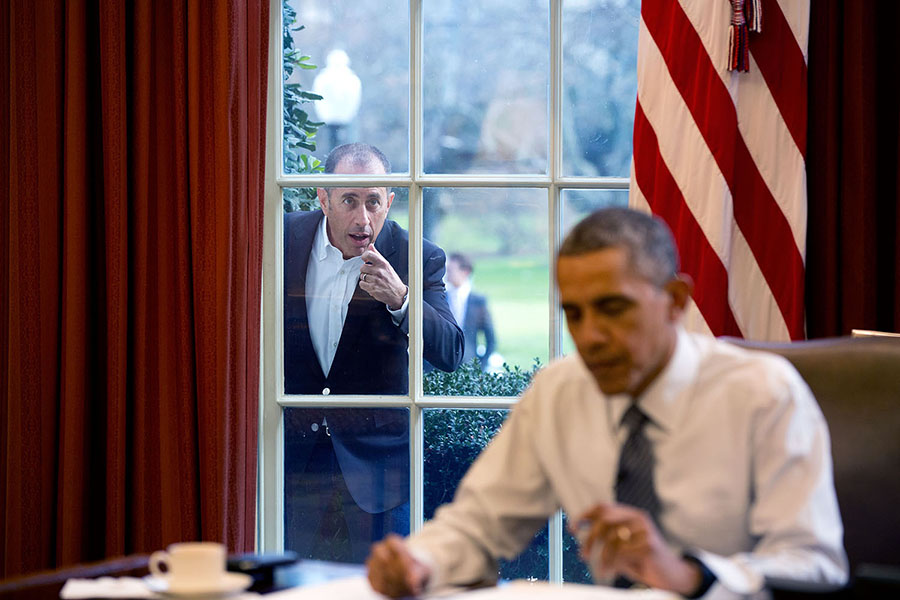From a success perspective, it’s pretty hard not to admire Jerry Seinfeld. And just in case your alarm clock hasn’t gone off since, oh, 1998, here’s why.
In 1998, his highly successful situation comedy “Seinfeld” aired its last episode after nine seasons and 180 episodes. It has consistently been referred to as one of the greatest sitcoms ever. So there’s that. Seinfeld also has 20 Primetime Emmy Award and four Grammy Award nominations. His show “Comedians in Cars Getting Coffee” has aired since 2012.
Seinfeld, along with other comedians such as Trevor Noah, Ellen DeGeneres, and Jim Gaffigan, tickles our funny bone through a form of humor referred to as “observational humor.” Observational humor is an approach to comedy wherein the comedian takes everyday occurrences and makes them relatable, then funny. Topics are those from ordinary life, such as taking the bus, grocery shopping, or going to the dentist. Frequently stand-up comedians will begin their observational monologue with the famous phrase “Have you ever noticed?”
Observational humor makes us laugh, to be sure, but there’s another dynamic occurring that is far more subtle, more impactful than one might think, and serves as a powerful lesson for leaders in all professions. When comedians draw events from real life, they build a bridge to those that they’re entertaining. They let go of their celebrity persona and connect in a familiar way with their audience. They become real, not bigger-than-life images. So when we hear the delivery from a comedian practicing observational humor, we laugh not so much because they told a joke — the fact is they typically don’t — but because we can relate. We feel as one with the performer.
This reaction emerges from a physiological and neurochemical dance in the human body that impacts our minds. We feel an emotional connection with the comedian, and we develop a sense of trust. Despite the likelihood that the comedian (including all three noted above) may be a multi-millionaire, we’re not likely to know them, and we’re equally as unlikely ever to have a conversation with them. We feel engaged.
This type of engagement isn’t limited to a professional comedic performance. When it happens in the workplace, engagement can yield multiple organizational benefits. Teams become more cohesive and collaborative. People feel good about themselves and their work. They feel appreciated—organizational performance increases. Trust, the lubricant for any organization, is nurtured. Relationships are strengthened through a fabric of connection at the heart and soul level.
If you’re a business leader and want to make this work for your company, ask yourself the following questions to let go, get real, and kickstart engagement for those you lead:
1. How are you feeling? Do the big issues and problems feel a bit less daunting and life-consuming? Are you able to recover from a let-down or failure a bit more quickly?
2. How is your team interacting? For example, when you walk by a team meeting or a few of your staff in the hall, or when people are waiting for everyone else to enter the videoconference call, are they sharing laughable moments that they’ve experienced either at home or with the work task? Are people laughing with each other? Countering one funny story with another?
3. How is your team interacting with you? Are they coming to you with smiles on their faces and sharing close-call mishaps? Are you receiving way-off-the-wall and creative and sometimes quite funny solutions to problems? Are you coming up with the same?
It isn’t easy. Engagement is often at the top of the “what leaders fail to do” list while they spend time focusing on strategic planning, metrics, and data. Concentrating on these traditional organizational challenges is the norm. The pace of work and the hyper-competitive environment in which we lead forces these issues to take priority.
The simple fact is that it takes much more work to build connections with others, but it doesn’t have to be that hard. A little humility and vulnerability, talking about the everyday things that matter in all of our lives — whether mass transit or mass emails — while throwing in observational humor can open the door to trusting bonds that serve our organizations well.
Observational humor can work magic. “Have you ever noticed…?” Just watch Seinfeld in action, and you’ll sense that connection. After all, we weren’t born as professionals; we were born as humans to laugh and love. The most impactful steps a leader can take are creating a relaxing and inclusive environment, letting go, and getting real. The benefits are sure to follow.




































